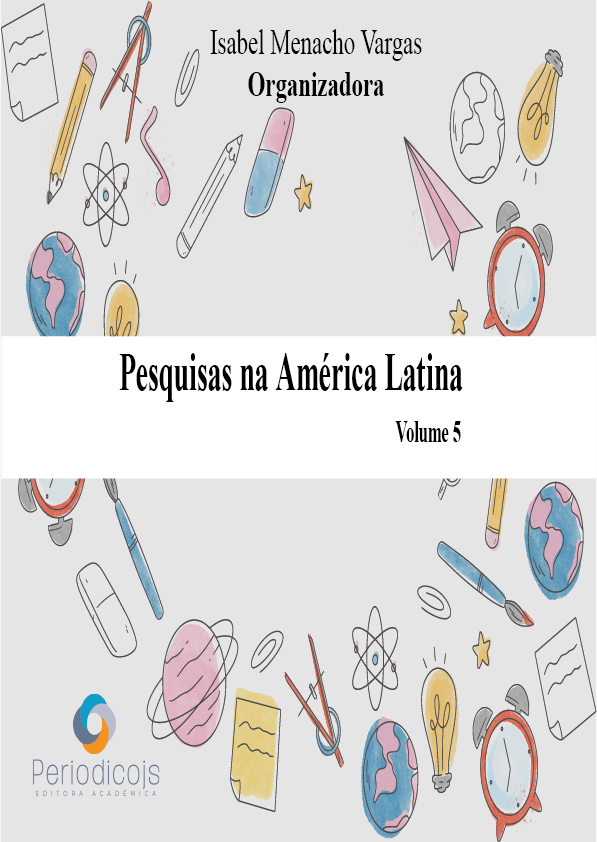Abstract
The present investigation has as general objective to determine the effects that the application of the plastic arts program has on the development of the emotional intelligence of the sixth grade students of the Villa el Salvador district. This study had a quantitative approach, positivist paradigm and the method used is the hypothetical - deductive, the type of research is applied and the research design was experimental, performing the pre-test and post-test with a single group, performing a test before the program and another after having completed the program in order to perform an analysis regarding the effects of the program on the emotional intelligence of the students. The study population was 110 6th year students from Sections A, B, C, D with 32, 26, 25, 27 students, respectively. For the sample, all students in section A were taken into account, that is, 32 students, this sample was non-probabilistic. The emotional intelligence test for children was used as an instrument in the study. This instrument adapted the 5 dimensions of emotional intelligence proposed by Goleman, being 60 the test questions, 12 questions for each dimension. The validity of the instrument was determined by a pilot test carried out on 20 sixth grade students from section D, belonging to the same educational institution. For the reliability of the instrument, the pilot sample was analyzed. From the analysis of the results, it is concluded that the plastic arts program has significant effects on the development of students' emotional intelligence. of the sixth grade of primary school in the district of Villa el Salvador.
References
Alenezi, A., Moustafa Saleh, M. S., Elkalashy, R. A. G., & Wolvaardt, E. (2020). Predicting effect of emotional-social intelligence on academic achievement of nursing students. African Journal of Health Professions Education, 12(3), 144. https://doi.org/10.7196/ajhpe.2020.v12i3.1365
Costa, C., Palma, X., & Salgado, C. (2021). Docentes emocionalmente inteligentes. Importancia de la Inteligencia Emocional para la aplicación de la Educación Emocional en la práctica pedagógica de aula. Estudios Pedagogicos, 47(1), 219–233. https://doi.org/10.4067/S0718-07052021000100219
Cruz, P. (2014). Creatividad e Inteligencia Emocional. Historia y Comunicación Social, 19, 107–118.
Fuster (2010). ¿Qué es el arte? Recuperado de 5 de junio de 2018 http://www.temakel.com/trltolstoi.htmEl arteshttp://www.portaldearte.cl/terminos/pintura.htm.
Gardner, H. (1994). Multiples Intelligences. New York: BasicBooks. Traduc. Española en Ed. Paidós.
Goleman, D. (1996). Inteligencia emocional (4a. Ed). Barcelona: Kairós. ISBN: 9788472453715
Goleman, D. (2012). Inteligencia emocional. Editorial Kairós González, O. J., Torres, H. F., & Hernández, M. (2018). La Inteligencia Emocional Y Su Contribución a La Educación Artística En La Universidad. Revista Conrado, 14(64), 146–152.
Hernández R., Fernández C. y Baptista P. (2014) Metodología de la investigación. México, impreso por Edamsa Impresiones, S.A. de C.V.
Hernández, R. & Mendoza, C (2018). Metodología de la investigación. Las rutas cuantitativa, cualitativa y mixta, Ciudad de México, México: Editorial Mc Graw Hill Education, Año de edición: 2018, ISBN: 978-1-4562-6096-5, 714 p.
Martín, N., & Jiménez, E. (2020). Emotional awareness in teacher formation through musical and visual elements: Use of language as means of expressing emotions. Formacion Universitaria, 13(4), 211–222. https://doi.org/10.4067/S0718-50062020000400211
Martínez, O. (2005). La tradición en la enseñanza de las artes plásticas. El Artista, 2005 (2) http://www.redalyc.org/home.oa
Ministerio de Educación. (2016). Currículo Nacional de educación básica [Libro]. Material educativo para ciclos inicial-intermedio. Perú. Recuperado de http://www.minedu.gob.pe/curriculo/pdf/curriculo-nacional-2016.pdf
Mayer, JD (1997). ¿Qué es la inteligencia emocional? En P. Salovey y D. Sluyter (Eds.). Desarrollo emocional e inteligencia emocional: implicaciones para los educadores (págs. 3-31). Nueva York: Basic Books. ISBN: 0465095879
Montes- Berges, B. y Augusto-Landa, J.-M. (2014). Inteligencia emocional y Intensidad afectiva como predictores de satisfacción vital y bienestar psicológico en profesionales de enfermería. Revista de Enfermería Profesional, 30 (1), 80-88 https: // doi.org/10.1016/j.profnurs.2012.12.012.
Nakano, T. de C., Moraes, I. D. T. de, & Oliveira, A. W. de. (2019). Relação entre inteligência e competências socioemocionais em crianças e adolescentes. Revista de Psicología, 37(2), 407–424. https://doi.org/10.18800/psico.201902.002
Nunes, J., & Toledo Júnior, A. (2021). Association between emotional intelligence and empathy among medical students: a single center cross-sectional study, Brazil, 2019. Revista Brasileira de Educação Médica, 45(1), 1–9. https://doi.org/10.1590/1981-5271v45.1-20200053.ing
Lowenfeld, V. y Brittain, W.(1980). Desarrollo de la capacidad creadora. Buenos Aires, Argentina: Editorial Kapelusz.
Puertas, P., Zurita, F., Chacón, R., Castro, M., Ramirez, I., & González, G. (2020). La inteligencia emocional en el ámbito laboral. Universidad de Jaén Facultad de Ciencias Sociales y Jurídicas, 36, 84–91. http://tauja.ujaen.es/bitstream/10953.1/10875/1/DEFINITIVO_MAYO_2019_SUBIDA_TFG.pdf
Rubiales, J., Russo, D., Paneiva Pompa, J. P., & González, R. (2018). Revisión sistemática sobre los programas de Entrenamiento Socioemocional para niños y adolescentes de 6 a 18 años publicados entre 2011 y 2015/Systematic Review of Social-Emotional Training Programs For Children and Adolescents. Revista Costarricense de Psicología, 37(2), 163–186. https://doi.org/10.22544/rcps.v37i02.05
Vaquero-Diego, M., Torrijos-Fincias, P., & Rodriguez-Conde, M. J. (2020). Relation between perceived emotional intelligence and social factors in the educational context of Brazilian adolescents. Psicologia: Reflexao e Critica, 33(1), 1–10. https://doi.org/10.1186/s41155-019-0139-y
Zambrano, L. (2020). Uso de la Tecnología de la Información y Comunicación en educación virtual y su correlación con la Inteligencia Emocional de docentes en el Ecuador en contexto COVID-19. Revista Ibérica de Sistemas e Tecnologías de Información, 40(12), 31–44. https://doi.org/10.17013/risti.40.31





